Topics
Category
Era
Gangster Era in St. Paul, 1900–1936
St. Paul in the late 1920s and early 1930s was known as a “‘crooks’ haven”—a place for gangsters, bank robbers, and bootleggers from all over the Midwest to run their operations or to hide from the FBI. The concentration of local organized crime activity prompted reformers and crime reporters to call for a “cleanup” of the city in the mid-1930s.
St. Paul earned its reputation as the “sanctuary for criminals” in the Midwest with the help of corrupt politicians and police chiefs who agreed to turn a blind eye to gangsters’ underground activities, which included smuggling, racketeering, and gambling. This collaboration began in 1900 with the Layover Agreement, an unofficial contract between criminals and Chief of Police John O’Connor.
In exchange for tip-offs about FBI raids and protection during their “layover” in the city, the gangsters first agreed to check in with the St. Paul police when they were in town. Second, they gave a portion of their gains to the police department. Finally, they agreed to commit no crimes within the city limits, though Minneapolis was fair game. Police chiefs after O’Connor, such as Frank Sommer (1922–1923) and Thomas A. Brown (1930–1932), continued to use the “O’Connor System” in an effort to keep crime levels down in St. Paul and to profit from gangsters’ illegal operations.
The prohibition of alcohol from 1919 until 1933 also encouraged the rise of St. Paul as a center for gangsters’ activities. The Volstead Act (or the National Prohibition Act), introduced by Minnesota Congressman Andrew Volstead in 1919 and made part of the U.S. Constitution as the Eighteenth Amendment, banned the manufacturing, sale, and transportation of alcoholic beverages. The closing of breweries and distilleries resulted in the rise of bootlegging (the smuggling and illegal sale of alcohol), and St. Paul became known as one of the “wettest” cities in the nation. The prohibition of liquor also led to an increase in organized crime, since mobs and gangs controlled bootlegging operations.
Knowing that they were generally safe in St. Paul, notorious criminals—including bank robber John Dillinger and his girlfriend Evelyn Frechette; racketeer and mob leader Al “Scarface” Capone; and the outlawed duo Clyde Barrow and Bonnie Parker—stayed in the city at some point, though most of their crimes were committed in other Midwestern states. In 1932, however, more than 20 percent of the nation’s bank robberies took place in Minnesota.
Gangsters frequented favorite spots throughout the city, such as the Green Lantern Saloon on Wabasha Street and Nina Clifford’s brothel on Washington Street. Some gang leaders used St. Paul as the headquarters of their operations. Leon Gleckman, known as the “Bootlegging Boss” and the “Al Capone of St. Paul,” established the base of his bootlegging business at the St. Paul Hotel.
Alvin “Creepy” Karpis and the Barker family—the core members of the Barker‒Karpis gang—set up a home in West St. Paul. FBI director J. Edgar Hoover had his eye on the gang's members after they robbed a store in Missouri and killed a sheriff on December 19, 1931. Hoover targeted Katherine “Ma” Barker, the mother of two of them, as the leader. FBI files suggest, however, that she was not heavily involved in her sons’ activities. Former gang members later claimed that she tagged along to give the impression of a mother traveling with her sons. Nevertheless, Hoover helped establish Ma Barker’s reputation among FBI agents and the American public as the gang’s mastermind.
Although the Barker-Karpis gang selected St. Paul because it was calmer than other Midwestern cities, they did not stop their criminal activities. In 1932, the gang robbed the Northwestern National Bank and Trust Company in Minneapolis and later the prominent Third Northwestern National Bank.
Although they had close calls with an FBI raid, the gang was able to flee in time to Wisconsin, thanks to tip-offs from a friend with contacts in the St. Paul police department. The gang suspected that Ma Barker’s boyfriend, Arthur Dunlop, had spilled details of their successful heists to their landlady’s son. When the police arrived at their hide-out spot in Webster, Wisconsin, they only found Dunlop’s dead body on the shores of a nearby lake.
In 1933 and 1934, the gang returned to St. Paul to plan the kidnappings of wealthy St. Paul businessmen William Hamm Jr. (president of the Hamm Brewing Company) and Edward Bremer (president of the Commercial State Bank of St. Paul), in exchange for large ransoms. Both victims were released shortly after the gang received the ransoms. But the kidnappings showed signs of the O’Connor system breaking down, since these crimes had been committed inside the city of St. Paul. Federal and local efforts to track down the kidnappers intensified as the story grabbed national headlines, and the Karpis-Barker gang members began to doubt the reliability of their police connections.
Similar FBI hunts for gangsters throughout the Midwestern states dragged on for more than a decade, while reformers such as St. Paul police chief Thomas Dahill and Mayor Mark H. Gehan called for a “war on hoodlums.” In March 1934, Dillinger had a shootout with the police and the FBI at his St. Paul residence, the Lincoln Court Apartments. Although he managed to escape to his doctor’s clinic in Minneapolis to hide and to receive treatment for his wounds, newspaper coverage of the shootout and Dillinger’s escape convinced citizens that the city needed to be “cleaned up.” This incident also made St. Paul a target of federal and state law enforcement agencies when Hoover sent in FBI agents to search the city for evidence of Dillinger.
Dillinger and other “public enemies” fascinated the American public with their ability to survive shootouts and escape police raids. Some local Minnesota residents, however, such as the members of the St. Paul Women’s Club, acted to end the crime wave. They helped elect the reform-minded Mayor Gehan and alerted the FBI to sightings of gangsters. Other Midwestern residents made deals with the FBI, offering them information about gangsters’ whereabouts. This was how Dillinger was finally caught: with a tip-off from a woman who agreed to help capture him. When Dillinger emerged from the Biograph Theater in Chicago with two women (one of whom was the informant), FBI agents cornered him in an alley, shot him five times, and killed him.
After Dillinger’s death, a number of other gangsters were killed by the police or brought to trial for their crimes. In January 1935, Ma Barker and her son Fred were killed during a shootout with the FBI in Florida. In June 1935, Doc Barker and four other gang members were brought to trial at the St. Paul federal court for the kidnapping of Edward Bremer.
In May 1936, Hoover, who had been criticized by a senator for not making any arrests himself, claimed to have personally arrested Alvin Karpis. He brought Karpis to trial in St. Paul, where he was charged for his involvement in the Hamm and Bremer kidnappings. On August 3, 1936, Karpis pled guilty to all charges and received a life sentence in Alcatraz. The “gangster era,” with its sensationalized hunts for wanted criminals throughout the Midwest, was finally winding to a close.
Bibliography
Brady, Tim. “Crime Capital.” Minnesota Monthly, April 2007.
http://www.minnesotamonthly.com/April-2007/Crime-Capital/
“Curtain Falls on Tragic Era.” St. Paul Pioneer Press, Sunday Pictorial Magazine, December 3, 1967.
Eighmey, Rae Katherine. “Andrew Volstead: Prohibition's Public Face.” Minnesota History 63, no. 8 (Winter 2013–2014): 312–323.
Federal Bureau of Investigation (FBI). John Dillinger.
https://www.fbi.gov/history/famous-cases/john-dillinger
Galvin, Jane. "Alvin Karpis Public Enemy Number One." American History 39, no. 2 (June 2004): 60–67.
Gentry, Curt. J. Edgar Hoover: The Man and the Secrets. New York: W. W. Norton, 2001.
Girardin, George Russell, William J. Helmer, and Rick Mattix. Dillinger: The Untold Story. Bloomington: Indiana University Press, 2004.
Maccabee, Paul. John Dillinger Slept Here: A Crooks’ Tour of Crime and Corruption in St. Paul, 1920–1936. St. Paul: Minnesota Historical Society Press, 1995.
Mahoney, Timothy R. Secret Partners: Big Tom Brown and the Barker Gang. St. Paul: Minnesota Historical Press, 2013.
Rodgers, Charlie. “St. Paul: Gangster Haven.” Collections Up Close Podcast and Blog, Minnesota Historical Society, St. Paul, December 7, 2010 https://www.youtube.com/watch?v=oVgrhFOiVS4
St. Paul Gangster History Research Collection, 1981–1995
Manuscript Collection, Minnesota Historical Society, St. Paul
http://www2.mnhs.org/library/findaids/00239.xml
Description: See the interview with Albert Grooms of Topeka, Kansas, June 18, 1993.
St. Paul Police Historical Society. Chiefs of Police.
http://www.spphs.com/history/chiefs.php
Toland, John Willard. The Dillinger Days. New York: Random House, 1963.
Related Resources
Primary
Boyd, Willard L. “Growing Up In St. Paul: Years of Depression, Gangsters, Good Schools.” Ramsey County History 27, no. 1 (Spring 1992): 18–20.
Criminal History Files, 1928–1982 (bulk 1928–1955)
Minnesota Bureau of Criminal Apprehension
State Archives Collection, Minnesota Historical Society, St. Paul
http://www2.mnhs.org/library/findaids/pubsaf08.xml
Description: Fifty-one criminal history files, mainly documenting high-profile 1930s gangsters, including Arthur (Doc) and Fred Barker, Clyde Barrow and Bonnie Parker, John Dillinger, Alvin Karpis, Frank Mitchell (Pretty Boy Floyd), and George Nelson (Baby Face Nelson).
High, Stanley. “St. Paul Wins a War.” Current History 49, no. 1 (September 1938): 18–20.
Moley, Raymond, and Edgar Sisson. "Crime Marches On: St. Paul-Gangster's Paradise.” Today 1, no. 35 (June 23, 1934): 3–4, 22–24.
Riege, Edwin “Ed” J. “The Dillinger Case.” The Investigator, Part I (November 1988): 9–11; Part II (December 1988): 2–3.
Secondary
“John Dillinger.” In Biography. Arts and Entertainment Channel, April 4, 1995.
Brede, Neil. St. Paul Gangster Days. VHS. Cable Access, St. Paul, 1987.
Cromie, Robert, and Joseph Pinkston. Dillinger: A Short and Violent Life. New York: McGraw-Hill, 1962.
Giese, Donald J., and Nate N. Bomberg. “St. Paul's Darkest Decade, 1925–1935.” St. Paul Pioneer Press, Sunday Pictorial Magazine. December 3, 1967.
Heistad, Mark. “A Story of Crime, Criminals, and Corruption.” Minnesota Public Radio, November 8, 1985.
Johanneck, Elizabeth. Twin Cities Prohibition: Minnesota's Blind Pigs & Bootleggers. Charleston, SC: History Press, 2011.
Keljik, Woodrow. “When the Saintly City Wasn't.” ACE [St. Paul Athletic Club] 65, no. 5 (May 1985): 4–23.
Mappen, Mark. Prohibition Gangsters: the Rise and Fall of a Bad Generation. New Brunswick, NJ: Rutgers University Press, 2013.
Oyaas, Mark. “[Interview with] Paul Maccabee.” In Northern Lights. Minneapolis: Minnesota Center for the Book, Metronet and Metro Cable Network, 1996.
Potter, Claire Bond. “‘I’ll Go the Limit and Then Some’: Gun Molls, Desire, and Danger in the 1930s.” Feminist Studies 21, no.1 (Spring 1995): 41–66.
Poulsen, Ellen. Don't Call Us Molls: Women of the John Dillinger Gang. New York: Clinton Cook Publishing Corporation, 2002.
Ruth, David E. Inventing the Public Enemy: The Gangster in American Culture, 1918–1934. Chicago: University of Chicago Press, 1996.
Underhill, Stephen M. “J. Edgar Hoover's Domestic Propaganda: Narrating the Spectacle of the Karpis Arrest.” Western Journal of Communication 76, no. 4 (2012): 438–457.
Web
Minnesota Historical Society. Gangsters in St. Paul.
http://libguides.mnhs.org/gangsters
Related Video
St. Paul: Gangster Haven
More Information
Articles
Related Images
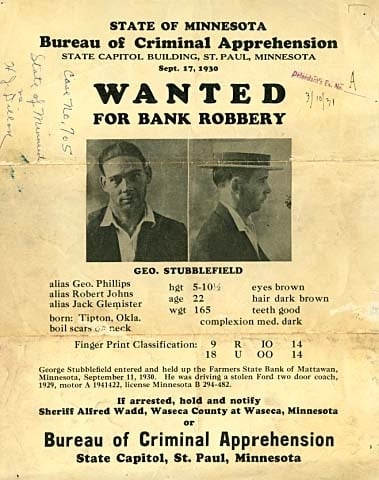
Wanted for Bank Robbery poster
Holding Location
Articles
More Information
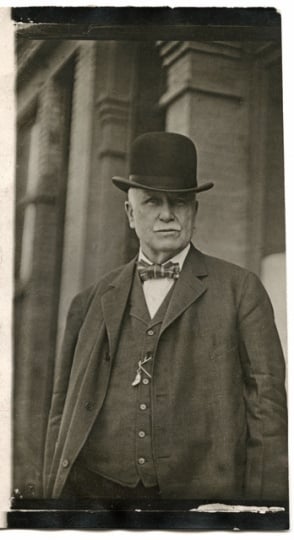
John O'Connor, Chief of St. Paul Police
Public domain
Holding Location
More Information
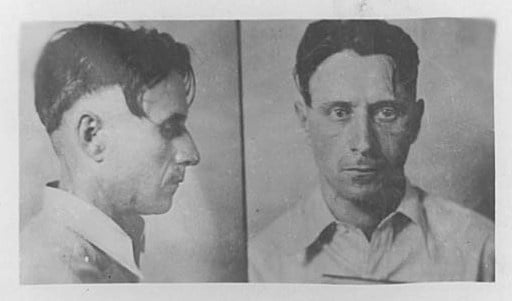
Fred Barker
Public domain
Holding Location
Articles
More Information
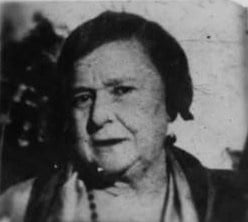
Ma Barker (Mrs. Arrie Barker, also known as Mrs. George Anderson)
Public domain
Holding Location
More Information
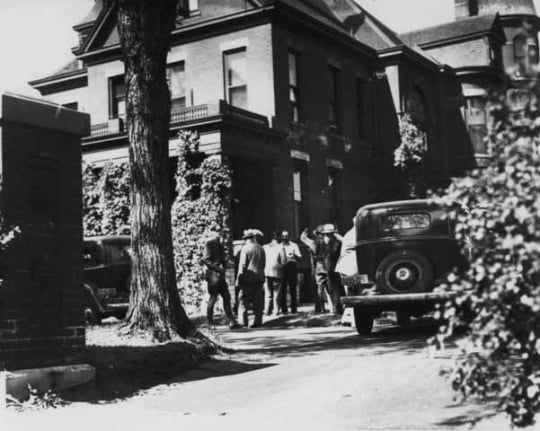
Investigators at the Theodore Hamm home
Holding Location
Articles
More Information
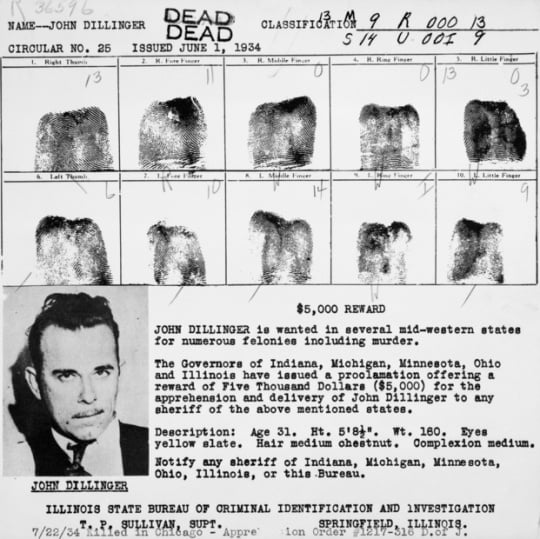
John Dillinger criminal file
Holding Location
Articles
More Information
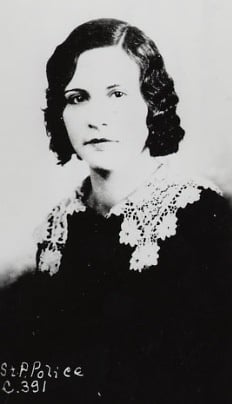
Evelyn "Billie" Frechette
Public domain
Holding Location
Articles
More Information
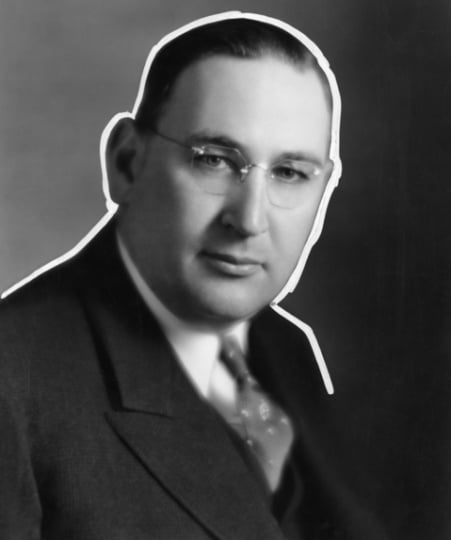
Tom Brown
Holding Location
Articles
More Information
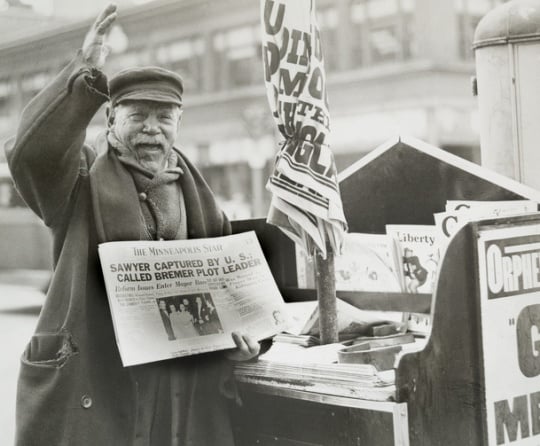
Man selling newspaper with headline related to Bremer kidnapping
Holding Location
Articles
More Information
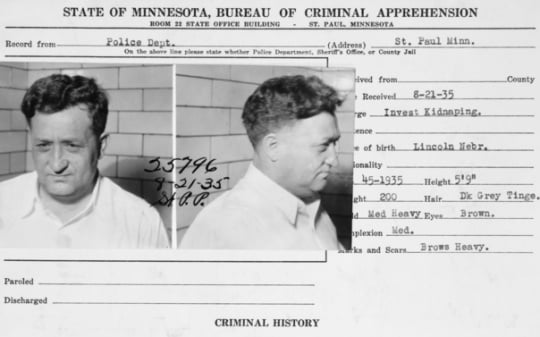
St. Paul Police Record for Harry Sawyer
Holding Location
Articles
More Information
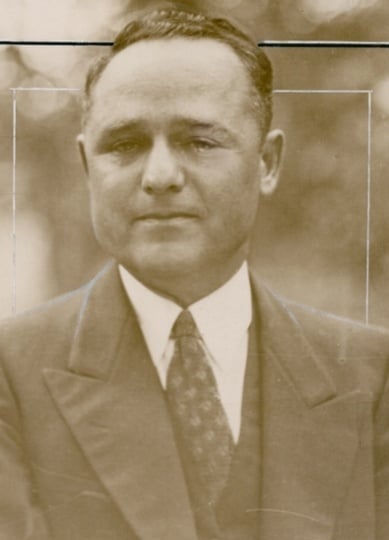
Leon Gleckman
Holding Location
Articles
More Information
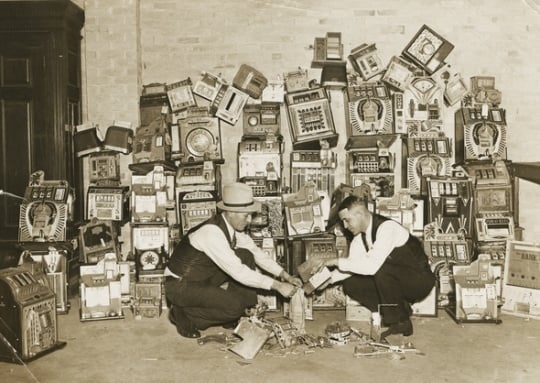
Police raid on slot machines, St. Paul
Holding Location
More Information
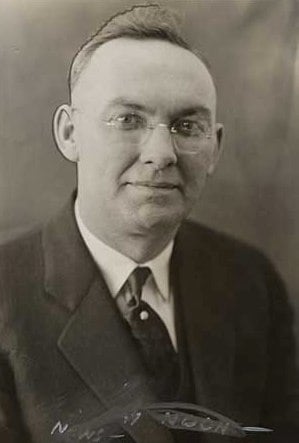
Thomas A. Dahill, St. Paul Chief of Police
Holding Location
Articles
More Information
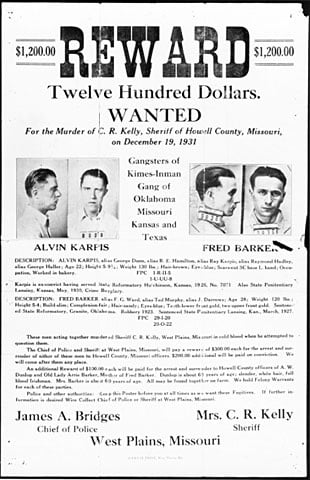
Reward poster for Alvin Karpis and Fred Barker
Holding Location
Articles
More Information
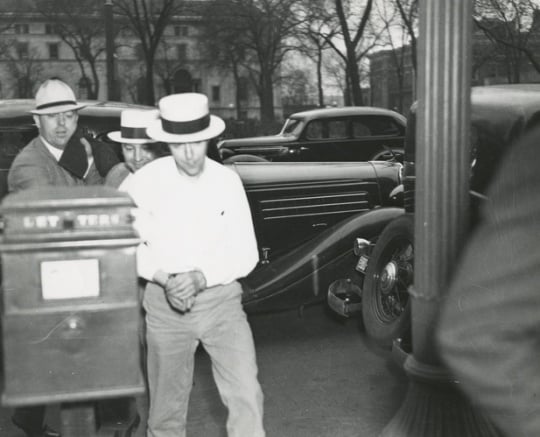
Alvin Karpis in the custody of federal agents in St. Paul
Holding Location
Articles
More Information
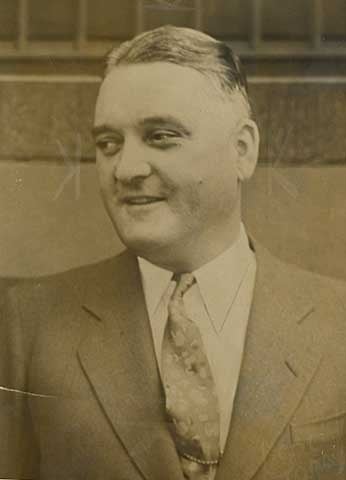
Jack Peifer
Holding Location
Articles
More Information
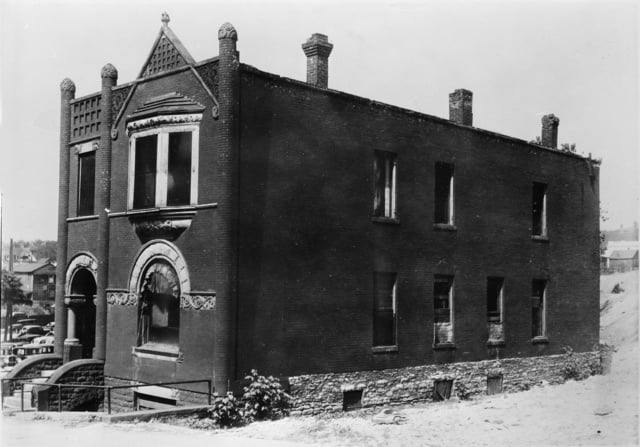
Nina Clifford’s brothel
Holding Location
Articles
More Information
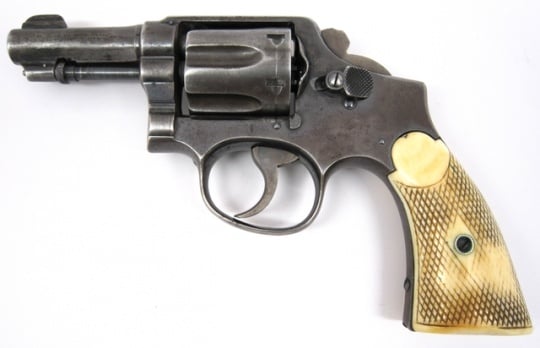
St. Paul Police revolver used in shootout with John Dillinger
All rights reserved
Holding Location
Articles
Related Articles
Turning Point
In 1933 and 1934, the Barker‒Karpis gang’s kidnappings of businessmen William Hamm Jr. and Edward Bremer in St. Paul show signs of the O’Connor System starting to break down. The kidnappings bring in the federal government and breach the agreement between gangsters and the police that no crimes would be committed within the city limits.
Chronology
June 1900
October 28, 1919
January 18, 1930
August 5, 1932
March 22, 1933
June 15, 1933
January 17, 1934
March 5, 1934
March 31, 1934
June 22, 1934
July 22, 1934
January 16, 1935
June 7, 1935
July 1925
May 1, 1936
Bibliography
Brady, Tim. “Crime Capital.” Minnesota Monthly, April 2007.
http://www.minnesotamonthly.com/April-2007/Crime-Capital/
“Curtain Falls on Tragic Era.” St. Paul Pioneer Press, Sunday Pictorial Magazine, December 3, 1967.
Eighmey, Rae Katherine. “Andrew Volstead: Prohibition's Public Face.” Minnesota History 63, no. 8 (Winter 2013–2014): 312–323.
Federal Bureau of Investigation (FBI). John Dillinger.
https://www.fbi.gov/history/famous-cases/john-dillinger
Galvin, Jane. "Alvin Karpis Public Enemy Number One." American History 39, no. 2 (June 2004): 60–67.
Gentry, Curt. J. Edgar Hoover: The Man and the Secrets. New York: W. W. Norton, 2001.
Girardin, George Russell, William J. Helmer, and Rick Mattix. Dillinger: The Untold Story. Bloomington: Indiana University Press, 2004.
Maccabee, Paul. John Dillinger Slept Here: A Crooks’ Tour of Crime and Corruption in St. Paul, 1920–1936. St. Paul: Minnesota Historical Society Press, 1995.
Mahoney, Timothy R. Secret Partners: Big Tom Brown and the Barker Gang. St. Paul: Minnesota Historical Press, 2013.
Rodgers, Charlie. “St. Paul: Gangster Haven.” Collections Up Close Podcast and Blog, Minnesota Historical Society, St. Paul, December 7, 2010 https://www.youtube.com/watch?v=oVgrhFOiVS4
St. Paul Gangster History Research Collection, 1981–1995
Manuscript Collection, Minnesota Historical Society, St. Paul
http://www2.mnhs.org/library/findaids/00239.xml
Description: See the interview with Albert Grooms of Topeka, Kansas, June 18, 1993.
St. Paul Police Historical Society. Chiefs of Police.
http://www.spphs.com/history/chiefs.php
Toland, John Willard. The Dillinger Days. New York: Random House, 1963.
Related Resources
Primary
Boyd, Willard L. “Growing Up In St. Paul: Years of Depression, Gangsters, Good Schools.” Ramsey County History 27, no. 1 (Spring 1992): 18–20.
Criminal History Files, 1928–1982 (bulk 1928–1955)
Minnesota Bureau of Criminal Apprehension
State Archives Collection, Minnesota Historical Society, St. Paul
http://www2.mnhs.org/library/findaids/pubsaf08.xml
Description: Fifty-one criminal history files, mainly documenting high-profile 1930s gangsters, including Arthur (Doc) and Fred Barker, Clyde Barrow and Bonnie Parker, John Dillinger, Alvin Karpis, Frank Mitchell (Pretty Boy Floyd), and George Nelson (Baby Face Nelson).
High, Stanley. “St. Paul Wins a War.” Current History 49, no. 1 (September 1938): 18–20.
Moley, Raymond, and Edgar Sisson. "Crime Marches On: St. Paul-Gangster's Paradise.” Today 1, no. 35 (June 23, 1934): 3–4, 22–24.
Riege, Edwin “Ed” J. “The Dillinger Case.” The Investigator, Part I (November 1988): 9–11; Part II (December 1988): 2–3.
Secondary
“John Dillinger.” In Biography. Arts and Entertainment Channel, April 4, 1995.
Brede, Neil. St. Paul Gangster Days. VHS. Cable Access, St. Paul, 1987.
Cromie, Robert, and Joseph Pinkston. Dillinger: A Short and Violent Life. New York: McGraw-Hill, 1962.
Giese, Donald J., and Nate N. Bomberg. “St. Paul's Darkest Decade, 1925–1935.” St. Paul Pioneer Press, Sunday Pictorial Magazine. December 3, 1967.
Heistad, Mark. “A Story of Crime, Criminals, and Corruption.” Minnesota Public Radio, November 8, 1985.
Johanneck, Elizabeth. Twin Cities Prohibition: Minnesota's Blind Pigs & Bootleggers. Charleston, SC: History Press, 2011.
Keljik, Woodrow. “When the Saintly City Wasn't.” ACE [St. Paul Athletic Club] 65, no. 5 (May 1985): 4–23.
Mappen, Mark. Prohibition Gangsters: the Rise and Fall of a Bad Generation. New Brunswick, NJ: Rutgers University Press, 2013.
Oyaas, Mark. “[Interview with] Paul Maccabee.” In Northern Lights. Minneapolis: Minnesota Center for the Book, Metronet and Metro Cable Network, 1996.
Potter, Claire Bond. “‘I’ll Go the Limit and Then Some’: Gun Molls, Desire, and Danger in the 1930s.” Feminist Studies 21, no.1 (Spring 1995): 41–66.
Poulsen, Ellen. Don't Call Us Molls: Women of the John Dillinger Gang. New York: Clinton Cook Publishing Corporation, 2002.
Ruth, David E. Inventing the Public Enemy: The Gangster in American Culture, 1918–1934. Chicago: University of Chicago Press, 1996.
Underhill, Stephen M. “J. Edgar Hoover's Domestic Propaganda: Narrating the Spectacle of the Karpis Arrest.” Western Journal of Communication 76, no. 4 (2012): 438–457.
Web
Minnesota Historical Society. Gangsters in St. Paul.
http://libguides.mnhs.org/gangsters




















